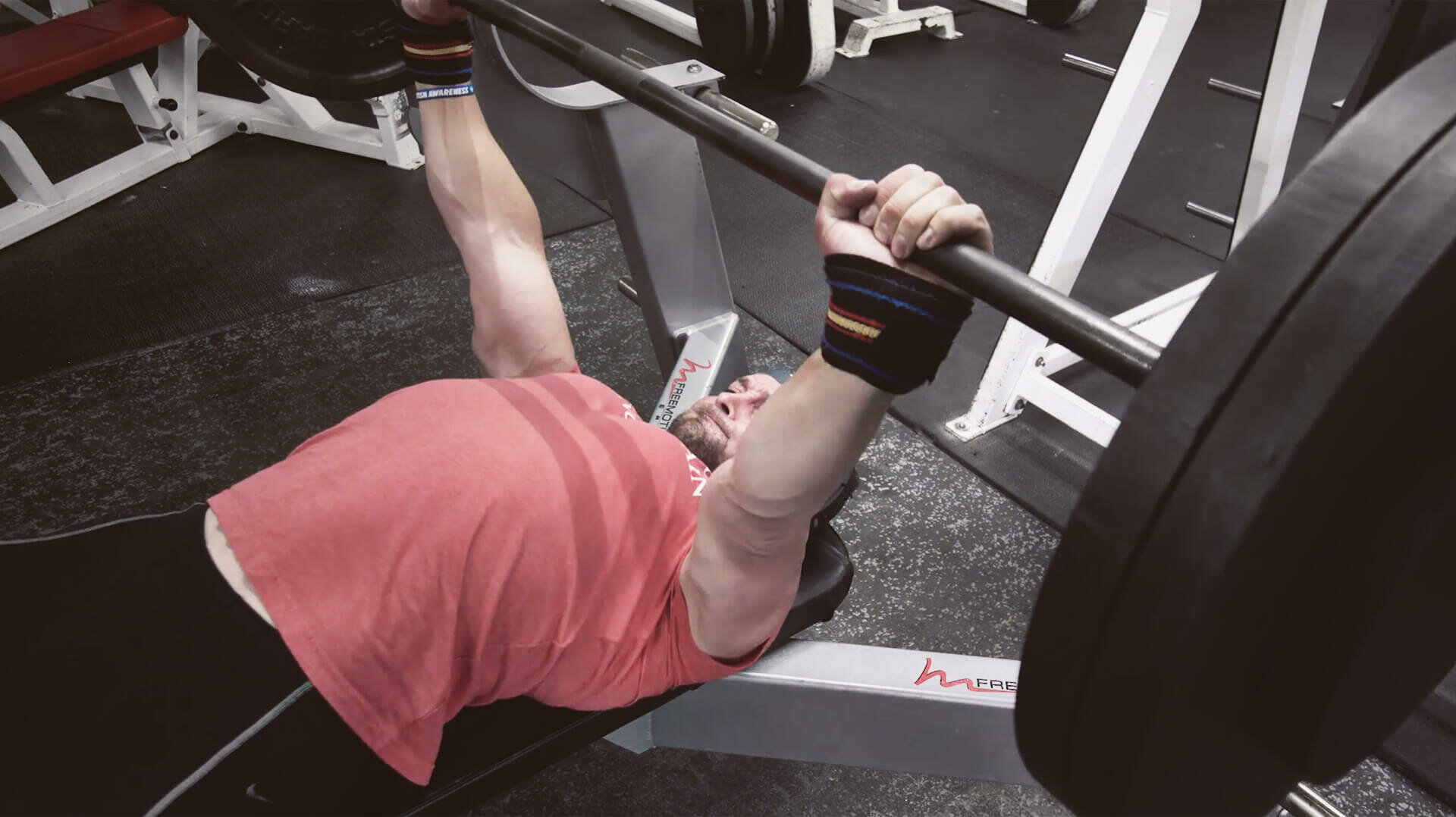Sometimes I wonder if periodization needs to be as complex as it’s written about. Then I realize that guys like Louie Simmons claim that it doesn’t exist, and then I remember that we now have block periodization, the conjugate method, and undulating periodization. More problematic, some of Louie Simmons’s students believe that progressive overload will only get you so far. But I think that type of thinking is due to a dearth of scope when looking at periodization and overload.
So to start, and to make it easier, periodization is setting your training up into various periods with a specific focus during each one. And we can look to Zatsiorsky as the impetus of all of our favorite new periodization models. In that particular text, he talks about everyone’s favorite type of training: linear periodization, which is a focus on one thing during a given period.
For example, if you’re training for a strength competition, like powerlifting, you’d have various cycles starting with hypertrophy, and ending with max strength and more specificity as you get closer to game day. And this type of programming typically trends towards a larger cycle of 12-16 weeks. So if you were prepping for a meet, your first four weeks of training are for hypertrophy, with a focus on high volume and low intensity. As the weeks travel on, you start to focus on power, with the intensity going up a bit, and the volume decreasing. For the final four weeks, your intensity goes up and the volume goes down as you build highly specific max strength in the given competition lifts.
In addition to the linear periodization models, there exist non-linear models of periodization. Now, in general, they look very different on paper. But for simplicity, we can look at it with an easier lens. While a typical linear program lasts 12-16 weeks (or is comprised of several cycles of that for an athletic season) an easy way to look at some of the non-linear models is to compress these long training cycles into shorter ones. So instead of focusing on hypertrophy, max strength, and power over a long period of time, you focus on them in shorter spans of time. And the results can vary depending on the goal or the coach, but hopefully a nice blend of the two so with that in mind, a given week can look like this:
- Day One – Strength (for a main lift like a squat or deadlift), Hypertrophy for other accessory lifts
- Day Two – Strength (for a different main lift), Hypertrophy for the necessary and related accessory lifts
- Day Three – Power (for the main lift), Hypertrophy
- Day Four – Power (for another main lift), Hypertrophy
If that looks similar to a template you might find from the dozens of articles about Louie Simmons, that’s because it is very similar, and in the references you can hear him speak on it even more. But the short answer is that Louie follows non-linear periodization and progressive overload in a sort of non-traditional way. A simple way to look at non-linear periodization is to take the linear model, and cram it all down into the confines of a week or two. In Louie’s case, the max effort lifts are done for three weeks, because as he states in the video in the references, you see diminishing returns in three weeks of doing the same stuff. After that, they change exercises. For example, a maximal effort bench day could consist of a PR on a three board press for three weeks, then a press from the pins in the rack the following three weeks. In terms of progressive overload, they would be changing the range of motion and the leverages. So while it isn’t necessarily going for linear strength gains the whole time, you’re adding in variety to train something “the same but different.” So it still works in with the non linear periodization models and progressive overload, all while increasing your numbers.
And in other models, like daily undulating periodization, you would take what you normally find in these big training cycles, and you can even train the qualities of the big models day by day. For instance, on a Monday, you can train strength, Wednesday, you could train hypertrophy, and Friday, you could train power.
So what am I supposed to do?
We know a little about some of the periodization models now, so the next logical question is “how do I use this stuff?” As with all things, it depends. Some of the research shows differences in certain facets. For instance, Bartolomei et. Al noted that for block periodization, after 15 weeks in trained athletes, power and performance of the bench press was significantly better, but there weren’t any significant differences in power or jumping ability for the lower body. In this study, they compared it to a traditional linear model. However, linear models are often measured over the course of a year, not a mere 15 weeks, so we have one limitation there.
In the meta-analysis cited, the overarching conclusion was as follows:
This is the first systematic review to compare the effects of the LP [Linear Periodization] and DUP [Daily Undulating Periodization] resistance training programs on muscle hypertrophy. The meta-analysis comparing the two models on muscle hypertrophy did not indicate a significant difference between their effects. Therefore, the main finding of our review is that, when LP and DUP are volume-equated, there is no evidence to conclude that one type of periodization outperforms the other in the above-mentioned variables.
Now, we know that our daily lives aren’t always close to what we find in a lot of the studies. And we also know that in many cases, studies have their flaws in terms of the participants tracking their own data. So there are some questions you must ask if you embark on choosing a training program either with yourself or with a coach.
What are my goals?
So, what are they? Are you a competitive athlete? Are you a model? A hobbyist? All these things will influence what you prioritize in your training. I personally don’t think anyone should try to replicate what Louie does, unless you are invited to train at Westside Barbell. Why? It’s highly specialized, catered towards lifters who use gear (both exogenous steroids and squat suits and bench shirts and the like), and is highly structured. I only mentioned it because it’s popular, and there are some aspects of it that you could apply in your training.
Now, what is your training age? If you are brand new and untrained, a linearly periodized program can get you strong and jacked for a long time. It doesn’t even have to be particularly good, as long as you can increase your progressive overload. However, you’d be crazy not to gain technical proficiency in the exercises, since they will make the rest of your endeavors that much easier.
The longer you train, the more tweaks you need to make to this model. How well are you recovering? Are you making progress in a realistic way, now? Things like that will determine the level of intricacy you incorporate.
So in this instance, a linear model can work quite well.
What is my life like?
Are you someone that travels around the world for work? Do you stick to your hometown but work odd hours, or weekends? If so, then a non-linear type of periodization model might be in your best interest, since your schedule isn’t rigid. Not only that, but if your life is that chaotic, the non-linear models lend themselves better to your own biofeedback.
With that in mind, we can combine the two questions. If you have a chaotic life, and your goal is to build muscle, you can use a non linear type of program as long as you ensure most of your work is on the hypertrophy side of things. This doesn’t mean you should neglect power or strength. As I’ve written before, a bigger muscle can yield a stronger muscle. So while you train specifically for hypertrophy, keep tracking your intensity as well.
Conclusion
What we know, now, is that both of these periodization models can work, and the studies show that. We can boil down the options based on how “easy” or “hard” your life is (for lack of better terms). If you have a static life, without much travel or stress, then it is easier to make a linear model fit your goals. If your life is dynamic, full of all kinds of stressors, travel, and the like, then you need something you can customize easier, like a non-linear model.
Even still, both models are up for revision based on the individual. If you train alone, it’s imperative to keep track of not only your workouts, but how you are feeling. A look at both of those things will be able to tell you where to go from there. If you hire a coach, and they do none of that, they’re doing you a disservice.
References
- Zatsiorsky, V. M., & Kraemer, W. J. (2006). Science and practice of strength training. Champaign, IL: Human Kinetics.
- Simmons, L. (n.d.). Louie Simmons on conjugate system. Lecture. Retrieved from https://www.youtube.com/watch?v=u10SeIhQGwE
A recording of Louie Simmons talking about the conjugate method - Bartolomei, S., Hoffman, J. R., Merni, F., & Stout, J. R. (2014). A Comparison of Traditional and Block Periodized Strength Training Programs in Trained Athletes. Journal of Strength and Conditioning Research,28(4), 990-997. doi:10.1519/jsc.0000000000000366
- Grgic, J., Mikulic, P., Podnar, H., & Pedisic, Z. (2017). Effects of linear and daily undulating periodized resistance training programs on measures of muscle hypertrophy: a systematic review and meta-analysis. PeerJ,5. doi:10.7717/peerj.3695

